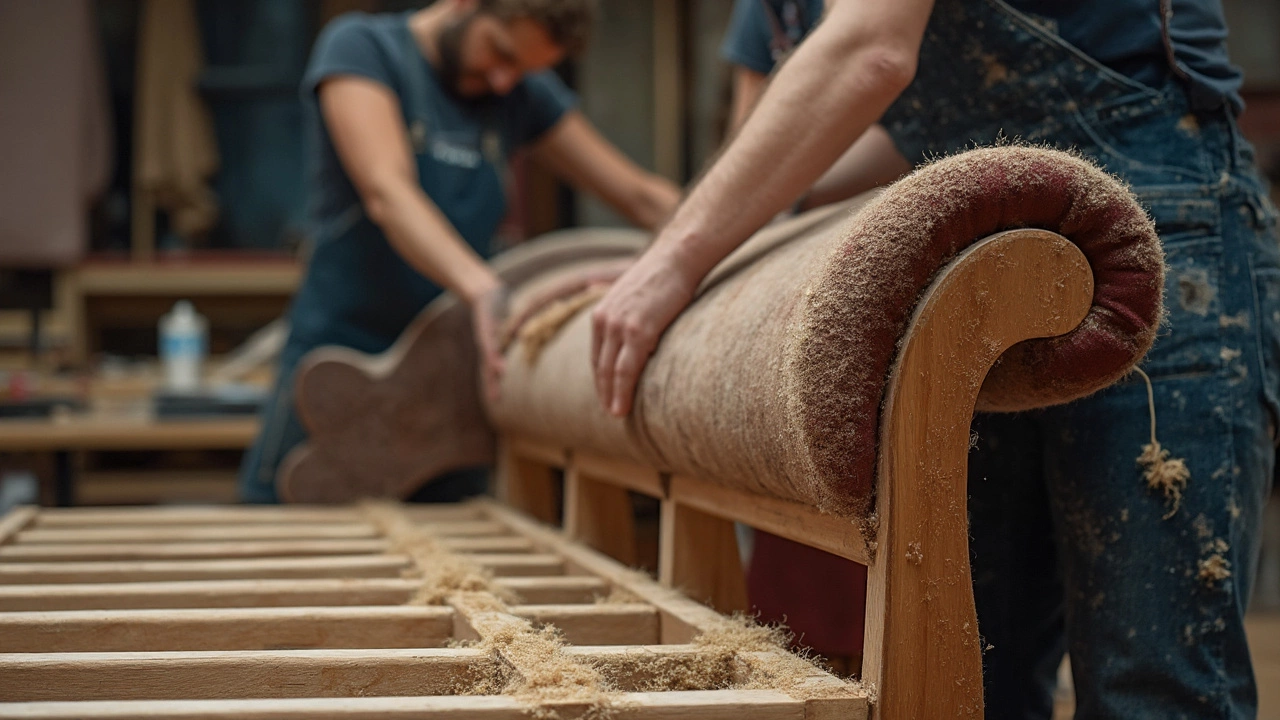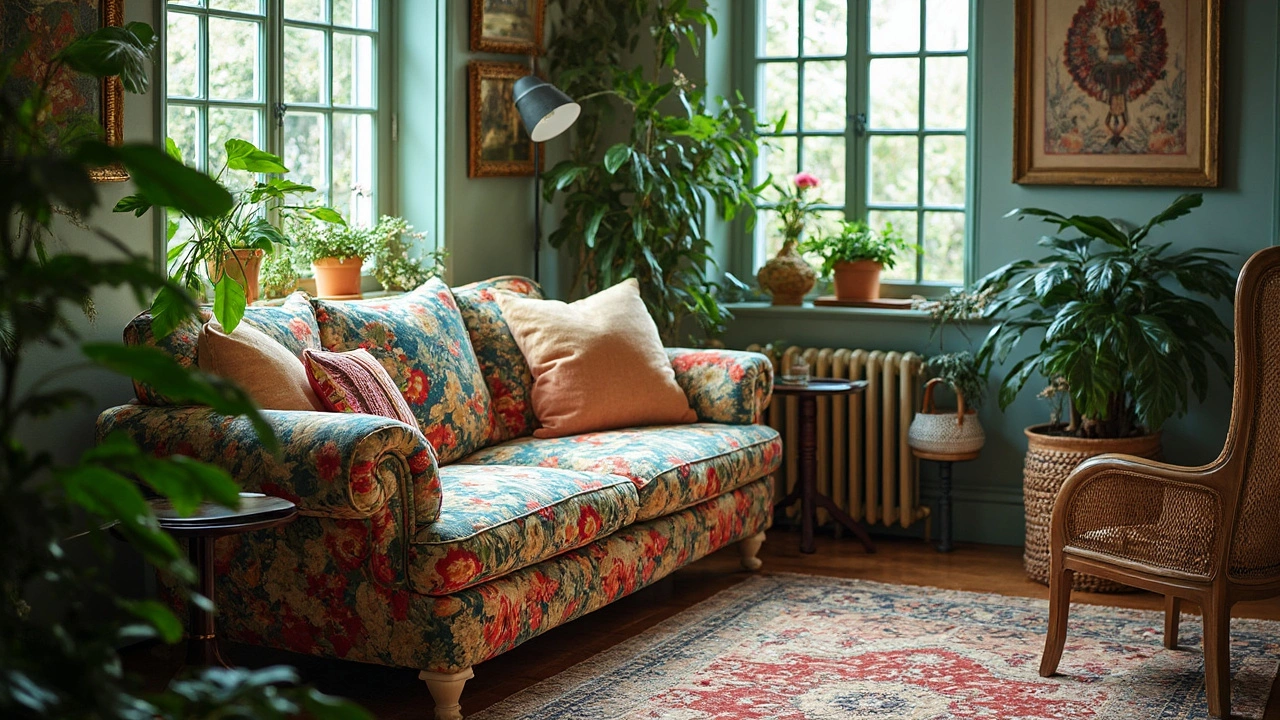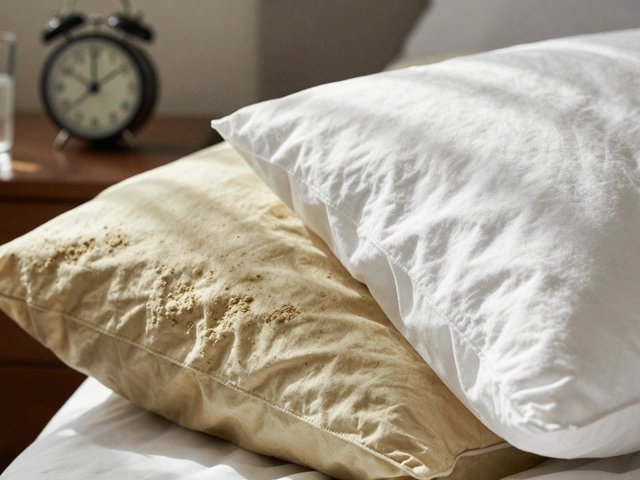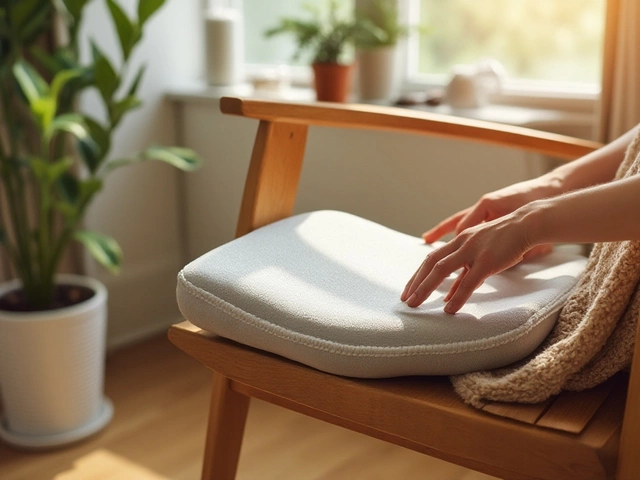How to Spot a High-Quality Sofa

Shopping for a sofa? It's not just about finding a style you love. You've got to consider quality, especially if you want it to last more than a few years. So, how do you tell if a sofa is high-quality? Let's crack open the myths and get to the good stuff you really need to know.
First, think about the frame. This is literally the backbone of your sofa. High-quality options use materials like hardwood (think oak or maple). These are sturdy and can take a good deal of weight and wear. Avoid softwood like pine unless you don't mind a shorter lifespan for your sofa.
Then, there's the stuffing. Cushions filled with high-density foam or a foam and feather mix tend to hold their shape longer and offer better support. It's like the difference between sitting on a firm yet comfy chair and sinking into a beanbag. You pick which one sounds better for daily use!
- Frame Construction
- Cushion Fillings
- Upholstery Fabrics
- Support and Comfort
- Durability Indicators
- Avoiding Common Pitfalls
Frame Construction
When it comes to sofas, the frame construction is like the foundation of a house—everything else depends on it. If you're looking for a high-quality sofa, pay attention to what lies beneath the cushions.
Materials Matter
The best frames are typically made of hardwoods, such as oak, ash, or beech. These materials are not only durable but also resistant to warping and generally last longer. Keep an eye out for terms like 'kiln-dried,' which indicates that the wood has been dried in a controlled way to improve its stability and lifespan.
Joinery Techniques
How the pieces of the frame are joined together can say a lot about its quality. Dovetail or mortise and tenon joints are generally reliable. They are like the 'secret sauces' of furniture-making, ensuring sturdiness over time. Avoid frames that are simply fastened with nails or staples, as these are less durable.
Support Systems
A solid sofa quality indicator is the presence of a good support system. Sinuous springs or hand-tied coil springs are your best bet for support. They interact smoothly with the cushions and help maintain the sofa's shape and comfort level.
Finally, when inspecting, don't be shy to give the sofa a little shake test. A sturdy piece shouldn't wobble or make creaky noises. Trust your instincts; if it feels weak, chances are it's not built to last.
Cushion Fillings
When it comes to choosing a sofa, the cushion fillings are crucial for comfort and longevity. Not all cushions are created equal, and the type of filling can make a big difference in how your sofa feels and holds up over time.
Types of Cushion Fillings
Let's break down the common types of cushion fillings you'll encounter:
- High-Density Foam: This is the most popular choice. It provides firm support and maintains its shape well, making it ideal for those who use their sofas often—like for binge-watching marathons!
- Feather and Down: If you're after a soft, sink-into-me type of feel, this is it. But remember, these need regular fluffing and might not offer the best shape retention without added foam.
- Polyester Fiber: More budget-friendly, these cushions are soft but can flatten over time. They're great if you like to switch out your furniture frequently.
- Blend of Foam and Feather: A mix of foam and feather gives you a plush feel with the added support. It's like getting the best of both worlds—soft yet supportive.
According to furniture expert Jane Michaels, "
Investing in the right cushion filling can significantly increase the lifespan of your couch while keeping it comfortable."
Key Considerations
Consider your lifestyle and usage needs. Do you want a couch that welcomes you with a soft hug, or do you need the support for sitting long hours? Think about how much maintenance you're comfortable with, too, as some fillings require more fluffing and care than others.
It's all about balance—getting a high-quality sofa means finding the right filling that matches your comfort and practicality needs, not just what's on trend.

Upholstery Fabrics
If you really want your sofa to stand the test of time, then the upholstery fabric is a big deal. Not all fabrics are created equal. Some will fade, pill, or even tear much faster than others. So, let's break down what you need to know about choosing the right fabric for your high-quality sofa.
Natural Fabrics
Natural options like cotton and linen are popular for their softness and breathability. However, they might not be the best pick if your sofa will see a lot of wear and tear. They can stain easily and may not hold up as well over time. If you must have that natural feel, look for a high-quality weave or add a stain-resistant treatment.
Synthetic Fabrics
Synthetics like polyester and microfiber are champs when it comes to durability. They're resistant to stains and usually a bit more affordable, which is great if you've got kiddos or pets. Microfiber, in particular, is known for being incredibly soft while managing to resist stains and water, making it a great choice for a family-friendly sofa.
Leather
You can't talk about sofa upholstery without mentioning leather. Genuine leather sofas are often seen as a luxury for a reason. They can be quite durable and age gracefully, often looking even better over time. Just remember, all leather is not the same. Top-grain leather is high-quality, while bonded leather mixes leather scraps and can wear faster.
The Blend Fabric
Sometimes a blend of materials will give you the best of both worlds. This might mean a mix of synthetic fibers with natural ones, giving your sofa fabric some added durability while keeping it soft and inviting.
Before you make a decision, think about your lifestyle. Always check the fabric's cleaning code; some are easier to clean than others. A bit of extra care up front can pay off with years of comfort. If you're investing in a high-quality sofa, consider the demands your household will place on that fabric over time.
Support and Comfort
When it comes to choosing a high-quality sofa, support and comfort are huge factors that can really make a difference. No one wants to sit on something that feels like a plank or sinks them to the ground, right?
First off, let's talk springs. The suspension system in your sofa plays a big role in support. A quality sofa usually has sinuous springs or eight-way hand-tied springs. The latter is often found in the best sofas. Though they can be pricier, these springs offer fantastic support and distribute weight evenly, so you, your family, and your guests all stay comfy.
Next, consider the depth and height of the sofa. This isn't just about fashion—it's about finding that perfect fit for your body. Ideally, the seat depth should allow your feet to touch the floor comfortably when you're sitting back. Most sofas have a depth ranging from 21 to 24 inches, but the right one depends on your height and how you plan to use the sofa.
Let’s not forget about the back cushions. A good sofa will have supportive and comfortable back cushions that align with your spine’s natural curve. You can either go for loose back cushions or a tight back. Loose ones offer customizable comfort but may need frequent fluffing. In contrast, a tight back delivers a more formal look and often requires less maintenance.
If you're shopping in-store, take a seat and see how it feels. Does it support your lower back? Can you get off it comfortably without feeling like you've worked out your thighs? All these points are important to consider.
Here's a quick shopping tip: Wear your usual shoes when testing sofas to better assess the height and depth.
Support and comfort are key when it comes to finding a sofa that's worth your time and money. Being picky here will pay off with years of use and comfort.

Avoiding Common Pitfalls
Navigating the sofa market without tripping over common mistakes can save you a lot of time, money, and headaches. So, here’s how to avoid those embarrassing slip-ups when searching for a high-quality sofa.
Trusting Looks Over Comfort
Sure, we all want a sofa that looks like it just stepped out of a design magazine. But don’t let the beauty fool you. Always sit down on it. Test it out like you would at home. Does the support and comfort meet your expectations for binge-watching or chilling with a good book?
Ignoring Frame Quality
The frame is invisible, but it’s the most crucial part of a sofa’s quality. Stay away from sofas that creak under your weight or wobble when you shift. Solid joints mean a longer life.
Forgetting About Maintenance
Think about cleaning. Some upholstery fabrics are magnets for stains, while others repel them. If you're living with kids or pets, go for fabrics that are easy to clean or are stain-resistant. Your future self will thank you.
Getting the Wrong Size
Believe it or not, lots of folks forget to measure their space before buying. Grab a tape measure and double-check. Consider the room’s size, doorways, and your other furniture’s placement. It's all about balance, so avoid overcrowding or ending up with a tiny sofa lost in a massive room.
Overlooking Warranty and Return Policies
Always check the warranty and return options. This isn’t just a backup—it’s a valuable tool if your sofa surprises you with an unexpected flaw. A good warranty is like a little safety net.
Avoiding Impulse Buys
Finally, don’t rush the decision. Sleep on it. Think about your lifestyle, room, and the sofa’s role in your home. After all, it’s a big investment, not just a quick impulse buy.
Stick to these guidelines, and you’re on your way to finding the perfect piece for your home. Your future relaxation spot awaits!





